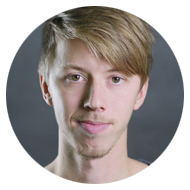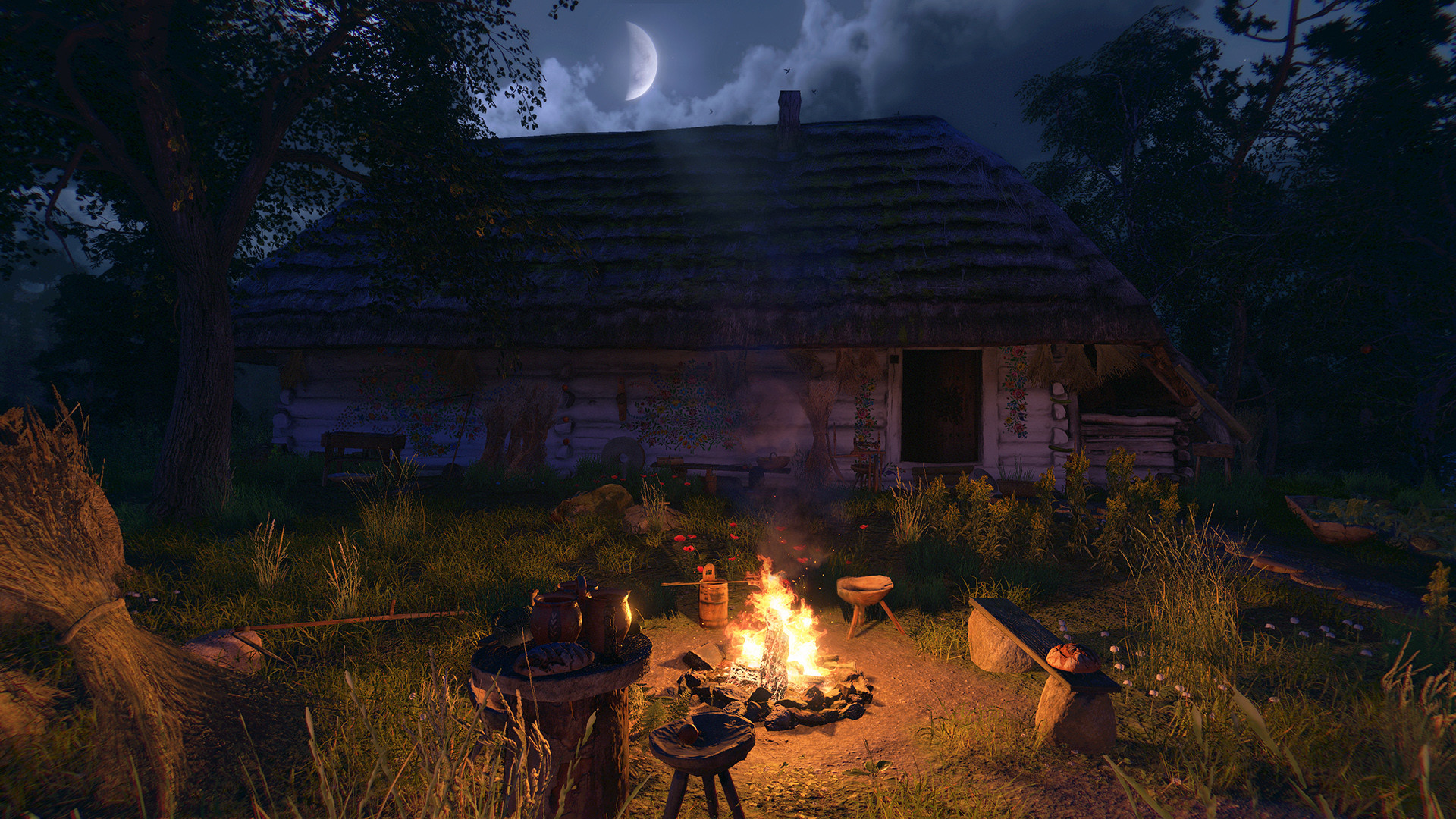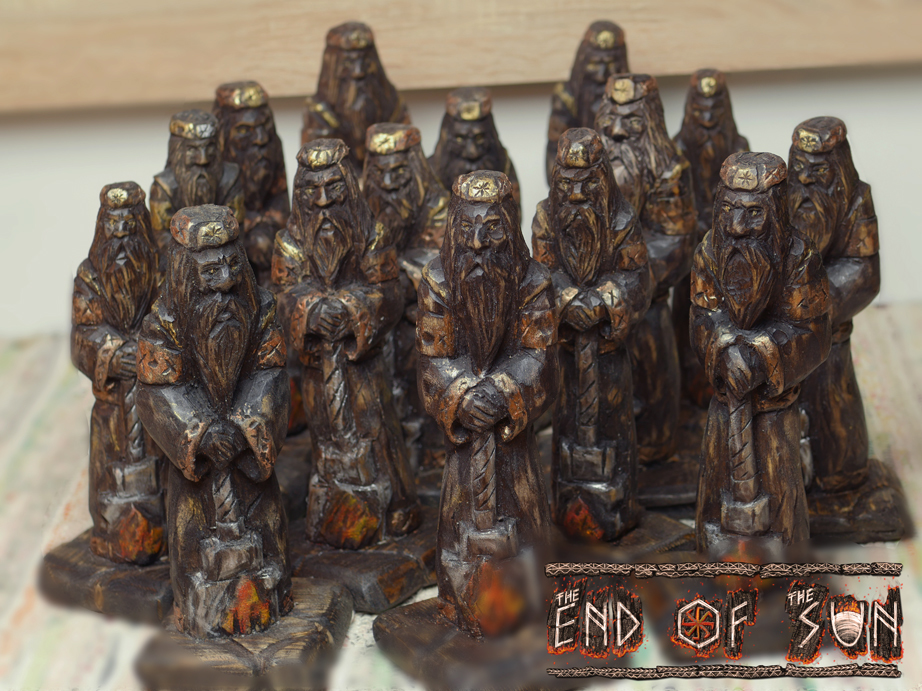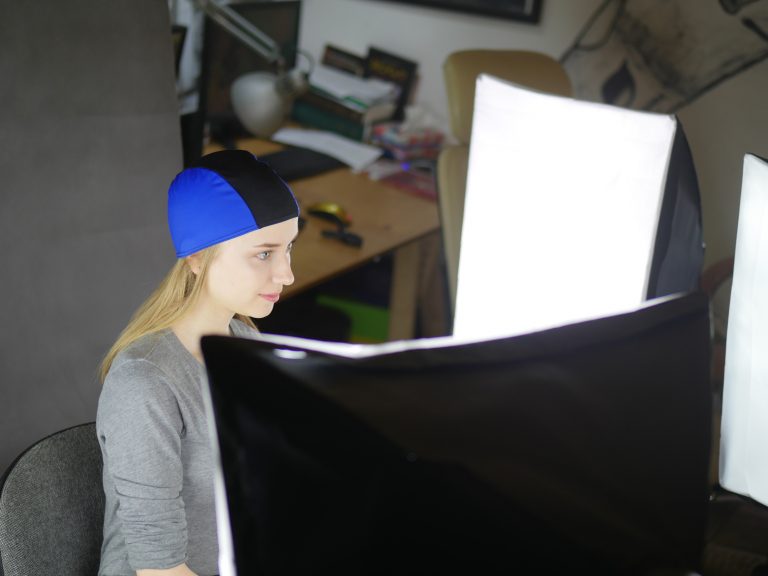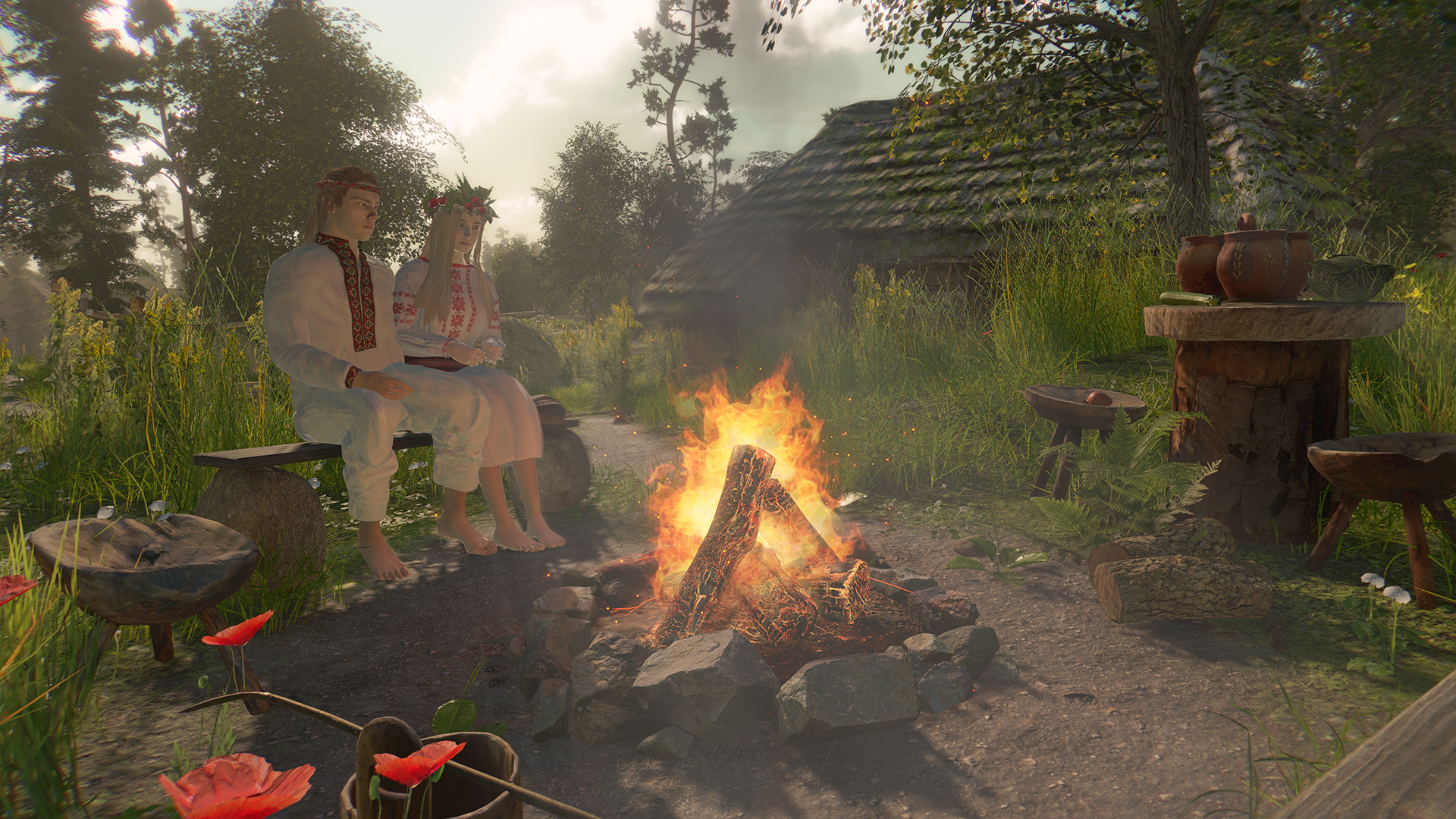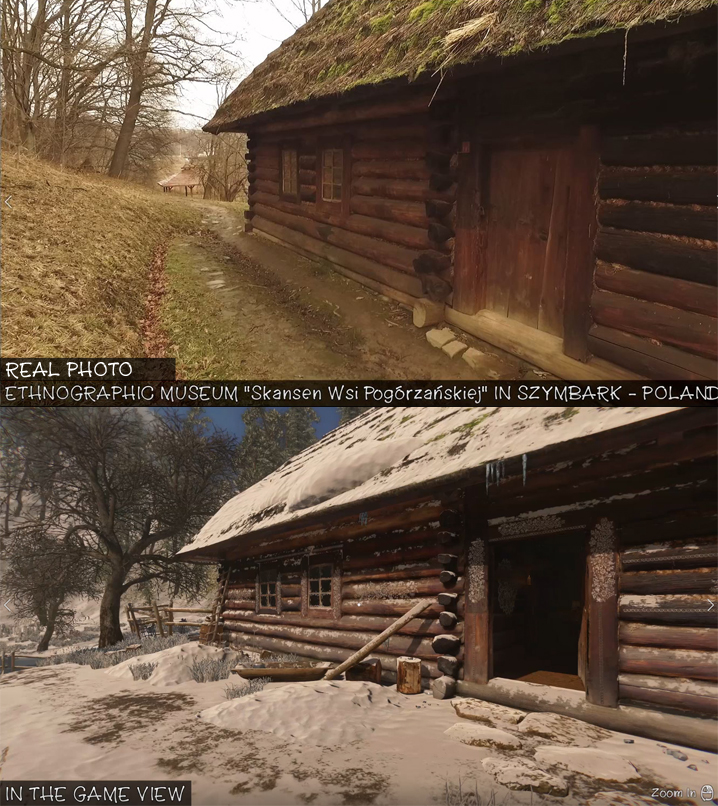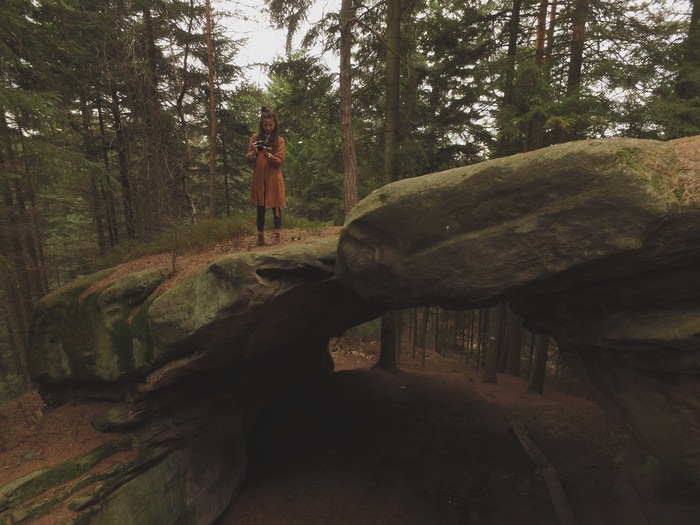The End of the Sun is an upcoming first-person exploration and adventure story-based game set in the Slavic fantasy world. It’s due out in 2021.
We caught up with Jakub Machowski, Director/Game and Graphic Designer/Screenwriter, to discuss the game’s setting, its Kickstarter success and the indie approach to photogrammetry, motion capture and sound design.
Jakub MachowskiDirector/Game and Graphic Designer/Screenwriter
Oleg Nesterenko, managing editor at GWO: Jakub, what is the state of the game right now?
In the case of an adventure game, it is hard to tell whether it is an alpha or beta version, but we have finished gameplay mechanics and now we are finishing all the puzzles, cutscenes and missions. We are also creating the remaining characters and polishing some things.
On Kickstarter, we have reached some stretch goals for additional puzzles and stories, so that’s some extra work we have to do.
Overall, we are in a pretty advanced stage. The game is 70-80% ready, that extra work included.
Feel free to check out our Developer Updates here and here.
About The End of the Sun
Tell us about the team behind the game.
We knew each other way before we started working on the game. We all have experience in what we do, but each of us has had to learn new things along the way. For example, Kinga [Kinga Rąpała, Music and Sound Designer/Enviroment Designer — Ed.] started as a sound designer and composer, but now she is making trees and plants for the game as well. She’s also sculpting 3D models and taking care of marketing. To be honest, it’s hard to say who does what on such a small team, we just do what it takes. Basically, it’s the two of us working on the project full-time. And our programmer [Hubert Motyka — Ed.] is helping us with certain tasks part-time.
Kinga Rąpała, Music and Sound Designer/Enviroment Designer
With the success stories like The Witcher or This War of Mine, video games are becoming a celebrated industry in Poland. As an indie team, do you feel like it’s getting easier for you to make games to Poland?
True, Poland has now a lot of studios that make AAA games. There are also a lot of indie teams that make smaller games that are also very popular.
Does it make it easier to make games in Poland? Yes and no.
On the one hand, we now have many more great friends from smaller and bigger teams that could always help us fix some problems or do cross-promotion with us. For example, we did a lot of cross-promotion with different games from Poland during our Kickstarter campaign.
On the other hand, there is still not much help from the government. There are grants you can apply for. But I don’t think a lot of devs can realistically get them. What we need is tax reductions for game creators or at least easier ways to get grants from the government.
Overall, Poland has a great community of video game developers. So, it’s much easier to make games here now than for example 10 years ago when I started my journey with video games.
You are self-published. Not fans of working with a publisher?
We never say we don’t want to work with a publisher. We are still considering publishers for Xbox / PS4 / Switch because we don’t know exactly how to port our game and how to market it on consoles.
We just would like to stay 100% independent. We want to release the game on PC / Mac / Linux first and do that on our own. We have the experience. And we want full creative control.
This is one of the problems with some publishers. Sometimes, they make you implement changes that you are not really comfortable with. Publishers don’t like to take risks with potentially unpopular mechanics or ideas because there’s a chance players might not like them.
But that’s exactly what we do. We experiment with gameplay and storytelling techniques, this is what makes indie games special!
Another thing about publishers is that sometimes they only do the kind of promotion that you can do your own. If you have the right skills, that is.
The End of the Sun
You launched your Kickstarter campaign when 80% of the game was ready. Why did it happen so late into development?
Nowadays Kickstarer is very different than it was years ago. I’d say people don’t have the same trust in Kickstarter projects anymore because there were many scam projects on the platform a few years ago.
8-10 years ago, you could do crowdfunding with just a promo video or a concept.
Today, Kickstarter has, to a great extent, become a pre-order platform. You need to have a detailed gameplay video or even a playable demo. You almost need a complete game to launch on Kickstarter. Did you notice how many devs on Kickstarter say their game can be ready in 2-3 months since the start of the campaign? It means that their game should be 95-100% ready.
Crowdfunding is hard, especially for devs without funds. But to get funds, you need to do crowdfunding.
And it’s not just hard because you need to have your game almost ready. It also takes a lot of marketing activities.
Big companies spend a lot of money to promote their Kickstarter projects. If they raise enough, they can reinvest it in even more promotion.
Without marketing skills or funds, it is extremely hard or even impossible to reach goals on Kickstarter. Even though we have the right skills, promoting and preparing our Kickstarter took us 3 or 4 months before the launch of the campaign and 1 month after (preparing T-shirts, shipping figurines, etc. Our Kickstarter success is not 1 months’ worth of work [The End of the Sun was 150% funded by 741 backers who pledged $18,000 — Ed.]. It’s like 5 months of marketing activities, creating videos, graphics, screenshots, setting up our webpage, etc. It’s all worth it. But it shows the amount of work you need to do when raising money through crowdfunding.
The End of the Sun Kickstarter merch (Svarog figuines)
The End of the Sun is not your first Kickstarter project. Back in 2014, you ran another crowdfunding campaign for your previous title, The Mims Beginning. Any lessons learned from that earlier experience that you implemented now?
We raised money for The Mims Beginning on Indiegogo. At the time, I set up the campaign on my own, and even then it was hard. If I hadn’t had a free demo that I shared there, I could have failed to raise any money. But everything I learned back then made it possible for us to raise more than twice as much for The End of the Sun. This is despite not having a free demo now. It’s really hard to share a demo of an open-world adventure game. Still, we’ll probably have to do it ahead of the release.
The game itself is very different from The Mims Beginning, which was an isometric god simulator. Again, were you able to apply any gamedev lessons that you learned from your previous title?
Many things are actually similar in terms of game development. Work organization, game engine (we are still using Unity 3D but a newer version of course), marketing and testing. There are much more similarities than differences.
However, we use photogrammetry now. So we had to create a whole new workflow. The game is also set in an open world. Even if our in-game world is small, it requires almost all the knowledge that you need to make a huge open-world game. Making realistic graphics and connecting them with the software is very hard as well. Optimization is much more difficult to do.
Actress during photogrammetry session
What inspired you to make a game so deeply rooted in the Slavic culture?
We live in Poland. Many elements of the Slavic culture are still here. Some of them were adapted by the Catolic Church. Basically though, they only changed their names, but these are still 100% Slavic festivals. For example, the Kupala Night is nowadays called “Noc Świętojańska” (Midsummer Night). People think this is a Catholic festival, while it is a very old Slavic festival.
This is our culture. We thought it could be very interesting to showcase in a fantasy context.
“Wreaths with candles floating along in the river in the moonlight, bonfires everywhere around” — it will be a great motif for a video game, we thought. That’s how it all started.
In The Witcher 3, they use almost every creature from the Slavic mythology. It is totally different than what players know from the Greek or Celtic culture. It’s much more connected with Nature.It’s much more “dirty” and straightforward. If you live in any of the Slavic countries (Poland, Russia, Czech Republic, Croatia and many others.) or if you’ve been to these countries, you must have noticed that these straightforward relationships and connection to Nature are still part of our lives.
The End of the Sun
The time-manipulation mechanic is pretty intriguing. These are also usually used in games with strong adventure elements. Your game, though, follows a history of a family through a series of seemingly mundane scenes. What was your thinking behind combining this explicitly peaceful and somewhat bucolic narrative with the time-changing powers of the protagonist?
I’m happy that you noticed that because this was part of our game design. From the very start, we would like to let players experience the emotions and atmosphere of a Slavic village and its people. What is more Slavic than a hero that at first sight looks like an ordinary person? They do standard human things like cleaning the stable or chopping wood. And the same time, they have the power to change the world. Don’t you think this is why people liked Geralt of Rivia so much? He has these typical Slavic features. He is very human, but at the same time he kills monsters. He is not perfect by a long shot, but he would fight for his friends. We noticed this is very typical for the Slavic culture.
You said in your devblog that players can complete different scenes of the game in any order they want. Does it make The End of the Sun a non-linear title?
I’m not sure what to properly call that. We don’t plan many endings or paths. However, every player will be able to uncover the story in a different order, so they will have a slightly different experience. As it is open-world, some players will find secret places or elements that others won’t. So the order of uncovering the story will be different from player to player. It’s not like going along totally linear stories in, for example, What Remains of Edith Finch, or Dear Esther. Great games by the way.
The End of the Sun uses photogrammetry and ambient sounds that you actually recorded in the field. How much effort and time went into capturing your references?
A lot! Scanning is a hard thing to do because of the weather/ light conditions. And sometimes you need permits to access some buildings or their elements. We spent around a month taking pictures of things. And making pictures is like 10% of the whole photogrammetry process.
For more information, check out our gamedev blog.
In retrospect, would you say all the legwork in the field was worth it? Scanning all these objects so carefully and extensively and then still having to simplify the models through retopology and model a lot of stuff manually anyway?
There is no way to get that quality that fast without photogrammetry. I think graphic designers might just overlook some details that natural objects have. Photogrammetry is faster and it gives a game a unique look.
However, we also make some elements using standard modelling (for example statues/ fantasy elements/ creatures or clothes). It is impossible to make a game with just photogrammetry scans. I think we have like 60%-70% photogrammetry models.
Speaking of Slavs’ connection to Nature. Kinga taking pictures of “Devil’s Court” stone as part of photogrammetry process
You also use motion capture. Tell us about your experience setting up your own motion capture studio?
We used 2 Kinect and 3 PS Move controllers to record animations. The software we are using is called iPi Soft. Our Kickstarter video won first place in their Mocap Contest which got us the iPisoft Mocap Studio Pro license. So we were able to improve animations that you saw in our gameplay video.
I also think the music in the game is nothing short of outstanding. Some words about working on the soundtrack?
Soundtrack is very important for us. It gives like 50% of the atmosphere. Kinga Rąpała, our sound designer and composer, is inspired by folk music and, specifically, the Slavic music. We just gave it a little bit of a classical feel. It’s hard to explain but we had to adapt it to our game’s “secret / detective” atmosphere. In our soundtrack, there are a lot of traditional instruments. For now, we are mostly using samples and VSTs. But we are hoping to record more real physical instruments before the release. A few tracks of the game’s score are available on our YouTube channel. Kinga tried to work some characteristic musical motifs in the soundtrack, so we are hoping that after the game launches, if someone hears our music, they will know it’s from The End of The Sun.

